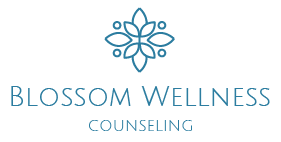Blog
Blog

How to Set Emotional Boundaries in a Relationship
Emotional boundaries refer to the limits and guidelines we put within ourselves to protect our own emotions, maintain a sense of identity, and handle healthy interpersonal relationships. These boundaries describe the emotional space between us and other people and define what is acceptable and unacceptable in terms of emotional interactions. Emotional boundaries help us develop healthy relationships for several reasons:
1. Self-Identity and Autonomy
Emotional boundaries help us maintain a sense of self-identity and autonomy within a relationship. They allow us to express our thoughts, feelings, and needs without feeling overwhelmed or losing our individuality.
2. Respect for Individual Differences
Healthy emotional boundaries promote respect for individual differences and personal space. Recognizing and respecting each other's unique emotional needs and perspectives creates an environment of understanding and acceptance.
3. Effective Communication
Establishing emotional boundaries encourages open and honest communication. If we have well-defined boundaries, we can express our emotions and needs clearly, making it easier for others to understand and respond appropriately.
4. Conflict Resolution
Clear emotional boundaries contribute to effective conflict resolution. When we understand and respect each other's emotional limits, we can manage disagreements more constructively and find mutually satisfying solutions.
5. Prevention of Emotional Burnout
Healthy emotional boundaries help prevent emotional burnout by allowing us to manage the amount of emotional investment in a relationship. This prevents us from becoming overly dependent on the other person for emotional support.
6. Establishing Relationship Parameters
Emotional boundaries help define the parameters of our relationships, outlining what is acceptable behavior and what is not. This clarity reduces ambiguity and minimizes the risk of unintentional emotional harm.
7. Building Trust
Establishing and respecting emotional boundaries is a fundamental aspect of building trust in a relationship. Trust is nurtured when we feel secure in expressing ourselves without fear of judgment or violation.
8. Balancing Independence and Interdependence
Healthy relationships strike a balance between independence and interdependence. Emotional boundaries allow us to maintain our independence while also developing a connection with our partners.
9. Promoting Emotional Well-Being
If we have well-defined emotional boundaries, we are better equipped to prioritize our emotional well-being. This self-care aspect contributes to overall mental and emotional health, benefiting both ourselves and our relationships.
10. Long-Term Relationship Satisfaction
In the long run, if our relationships have clear and healthy emotional boundaries, they will be more satisfying and enduring. Each of us will feel secure, valued, and understood, creating a foundation for a resilient and fulfilling connection.
So, how do we set emotional boundaries?
Setting emotional boundaries is a must in our relationships if we want to maintain a healthy and balanced connection with the people we love and care about. So, here are some steps and strategies to work on:
1. Self-Reflection
Take the time to reflect on your own needs, values, and emotions. Identify areas where you may feel uncomfortable or where your emotional well-being is compromised.
2. Identify Your Limits
Determine what behaviors, conversations, or actions make you feel uncomfortable or cross your emotional boundaries. Clarify your expectations regarding personal space, communication frequency, and emotional support.
3. Communicate Openly
Choose a calm and appropriate time to discuss your emotional boundaries with your partner. Use "I" statements to express your feelings and needs without blaming or accusing. Clearly communicate what behaviors are acceptable and what are not.
4. Be Specific
Provide concrete examples of the behaviors or situations that you find challenging or uncomfortable. Specify the actions or changes you would like to see to establish clarity.
5. Use Positive Language
Frame your boundaries in a positive light, focusing on what you need rather than what you don't want. Emphasize the importance of mutual respect and understanding in the relationship.
6. Set Consequences
Clearly communicate the consequences of crossing established boundaries. Be prepared to enforce consequences if necessary, reinforcing the importance of respecting each other's limits.
7. Establish Boundaries Gradually
Setting all boundaries at once can be overwhelming. Start with a few key areas and gradually expand as needed. Allow for open communication and feedback as you both adjust to the changes.
8. Respect Your Partner's Boundaries
Acknowledge that your partner may have their own emotional boundaries and needs. Create an environment where both of you feel comfortable expressing your boundaries without judgment.
9. Reassure and Validate
Reassure your partner that setting boundaries is a positive step towards building a healthier and more respectful relationship. Validate your partner's feelings and concerns, creating a sense of mutual understanding.
10. Seek Compromise
Be open to negotiation and compromise when it comes to setting emotional boundaries. Find a middle ground that respects both individuals’ needs and preferences.
Which step is your favorite?
Get the support you need to create calm confidence that lasts
Get the support you need to create calm confidence that lasts
Copyright@2023 Blossom Wellness Spa, Inc.
Copyright@2023 Blossom Wellness Spa, Inc.



